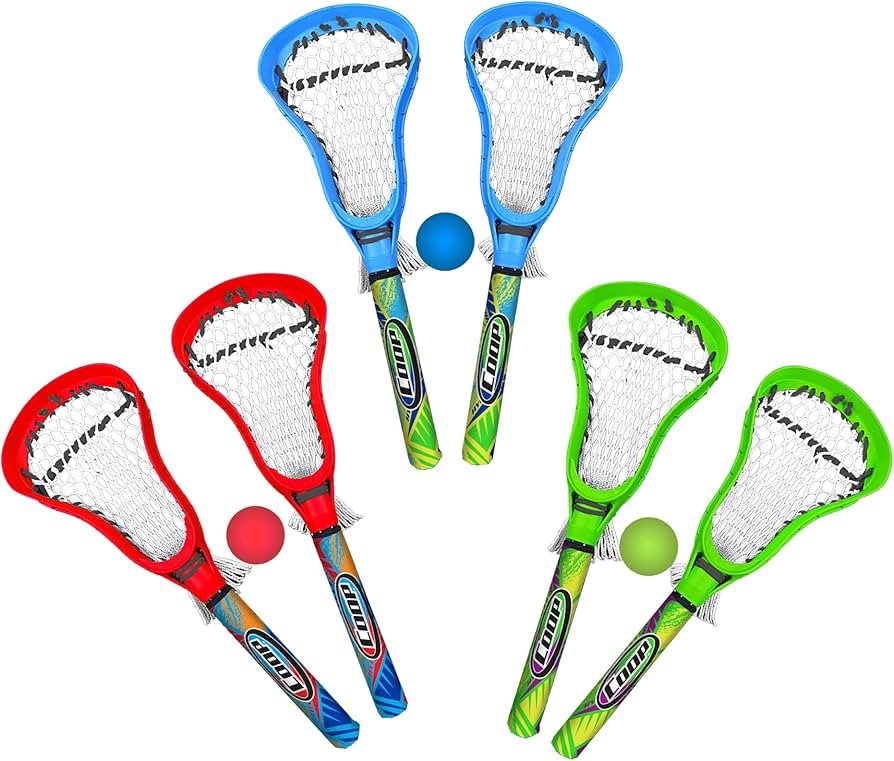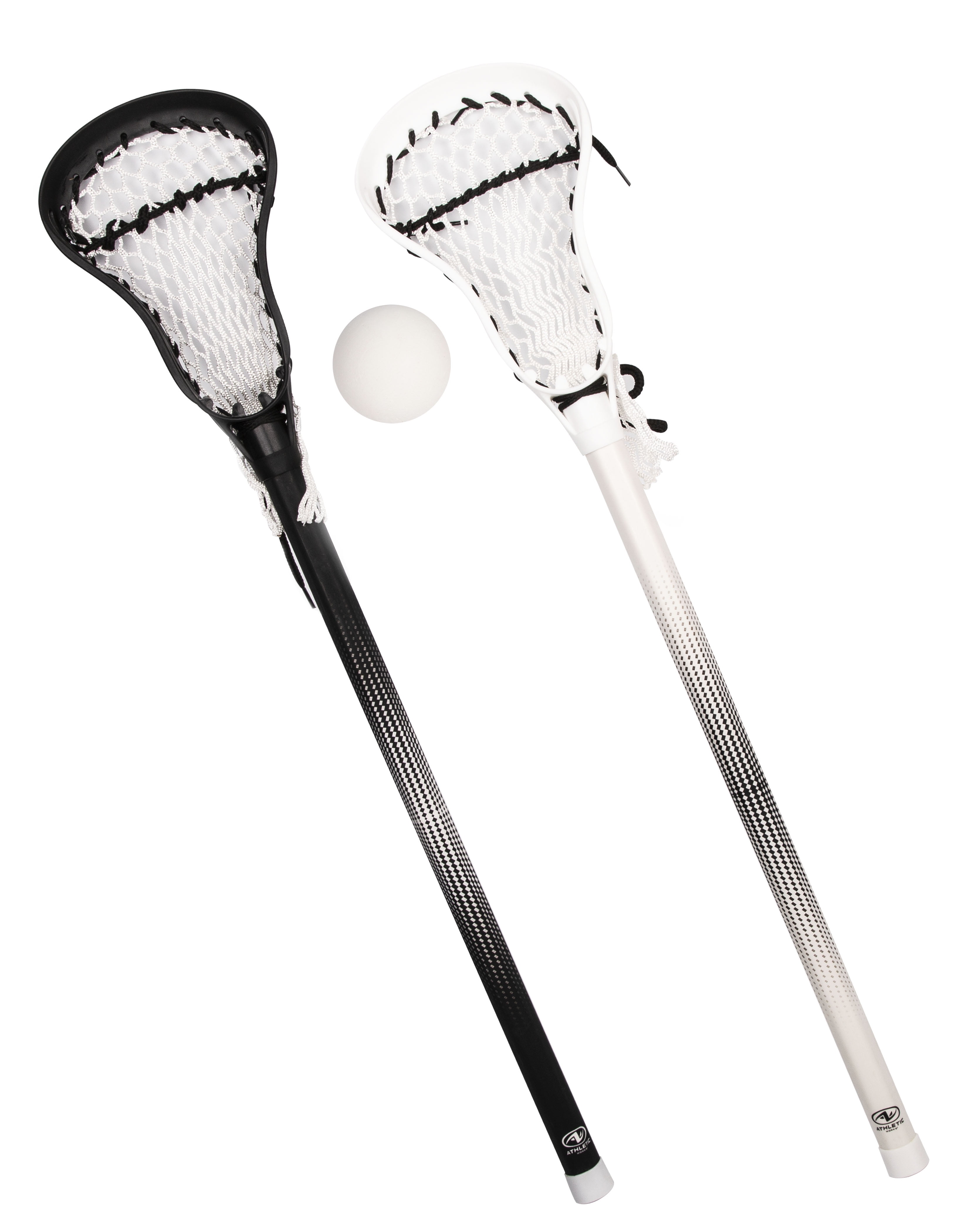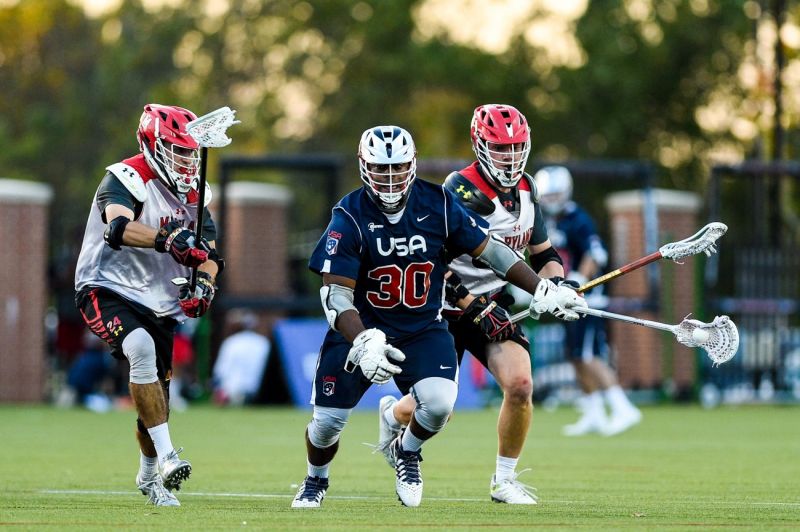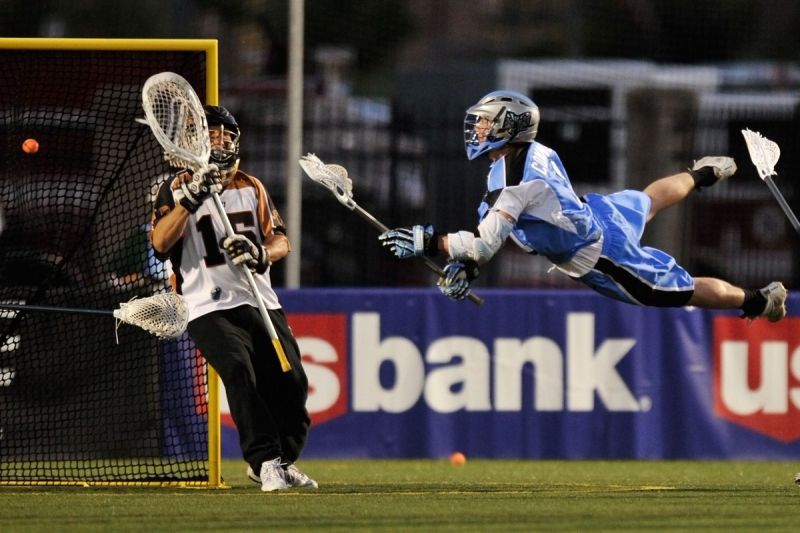The Best Lacrosse Gear to Improve Your Game This SeasonThe Best Lacrosse Gear to Improve Your Game This Season
Choose the Right Lacrosse Stick Length and Flex
Selecting the proper lacrosse stick is one of the most important purchases you’ll make as you learn the sport. The length and flex of your stick will impact your ability to catch, throw, scoop, and shoot the ball. As a beginner, you’ll want to start with a shorter stick, generally 40 to 42 inches from end to end. Shorter sticks give you more control and quicker hands as you develop your skills.
For youth and teen players, make sure the stick length aligns with your age and height per US Lacrosse recommendations. You want the head to come up to your hip when standing straight with shoes on. Adult men’s sticks run from 40 to 72 inches, but 60 inches is a common all-around size for midfielders and attackmen. Defenders often use longer sticks up to 72 inches for a wider range in checks and defensive positioning.
The flex rating or stiffness of your stick’s shaft is also important. Softer and more flexible sticks are easier to control as a new player. You’ll be able to catch passes cleanly, get better pocket feel on ground balls, and have more accuracy on passes and shots. Look for a 30, 50 or 60 flex rating as you progress. Experienced players who want more velocity on shots and passes may prefer a stiffer 70+ flex stick once skills are developed.
It’s smart to try out multiple lacrosse stick lengths and flexes when starting out. Many brands now offer “learn to play” packages with shorter sticks ideal for new players. Visit a lacrosse specialty store and test options to see what feels best for your current ability level. With the right stick in hand, you’ll gain confidence and be able to focus on improving your overall skills this season.
Softer Lacrosse Balls are Best for Beginners

One of the most important pieces of gear in lacrosse is the ball. For new players just learning the sport, a softer lacrosse ball can make a huge difference in developing your skills. Harder balls used at higher levels can hurt unprotected hands and make catching and cradling more difficult.
Soft lacrosse balls have a spongy, cushioned surface and flexible core. This allows for better grip, more control, and less sting when catching passes or scooping up ground balls. Soft balls are much more confidence-inspiring for beginners still working on hand-eye coordination and proper technique.
While regulation lacrosse balls for men’s and women’s must be solid rubber, youth and beginner balls can have soft exteriors around the solid core. The Warrior Nemesis was an early soft ball option, using foam padding over a rubber interior. Brands like STX, Maverik, and Brine also make padded “training lacrosse balls” for new players.
Another option is ball packs that include a mix of regulation solid rubber balls along with soft, foam practice balls. The contrast helps develop your skills catching both hard and soft passes. A 12-pack variety bundle is a cost-effective way to get all the practice you need when first starting with lacrosse.
Soft lacrosse balls make perfect sense when picking up a stick for the first time. Focus on technique rather than fighting a hard rubber ball. As skills improve, you can gradually mix in more reps with standard balls to get ready for game conditions. Taking the time to build confidence and stick skills with soft balls will pay off as you advance in lacrosse.
Gloves Improve Catching and Protect Your Hands

Most lacrosse players wear gloves for both protection and performance. While not strictly required, gloves greatly reduce the sting of catching passes, provide padding from checks, and improve your overall ability to handle the ball.
Lacrosse gloves have thick padding on the palms and between the thumb and forefinger to cushion catches. The backhand usually has less padding for breathability but still protects from slashes. Fingertips are left uncovered for feel when passing and shooting.
Gloves also help you securely cradle and control the ball, especially as you develop stick skills. Models with grippy palm materials give you extra command over passes and shots. Goalie gloves have heavy padding to knock down high velocity shots.
When buying lacrosse gloves, make sure to get a snug, anatomical fit. The glove shouldn’t slide around on your hand. A tight fit maximizes protection and ball control. Work the gloves in with use so they conform to your hands. Most players opt for 12-inch gloves in youth or senior sizes.
Brands like Maverik, STX, Warrior, Brine, and Nike make quality lacrosse gloves for all positions and budgets. Protection levels, padding placement, palm materials and overall fit will vary. Try on different options to find your ideal pair.
Lacrosse gloves truly enhance performance for players of all ages and abilities. Protect your hands while improving catches. Find gloves that fit your needs and wearing them consistently will quickly feel natural in practice and games.
Make Sure Your Lacrosse Helmet Fits Correctly for Safety
Stick Length Recommendations by Age and Position
- Youth and teen players: Follow US Lacrosse guidelines based on age and height
- Adult men’s sticks: 40 to 72 inches (60 inches common for midfielders and attackmen)
- Defenders: Up to 72 inches for extended reach and defensive positioning
Flex rating, or shaft stiffness, is another crucial factor. Newer players benefit from softer, more flexible sticks (30-60 flex rating) for improved control and accuracy. As skills develop, experienced players may opt for stiffer shafts (70+ flex) to generate more velocity on shots and passes.
To find your ideal stick, visit a lacrosse specialty store and test various options. Many brands offer “learn to play” packages with shorter sticks tailored for new players. Remember, the right stick will boost your confidence and allow you to focus on honing your overall skills throughout the season.
Soft Lacrosse Balls: The Secret Weapon for Skill Development
While regulation lacrosse balls are made of solid rubber, softer alternatives can be a game-changer for beginners. Why should new players consider using soft lacrosse balls during practice?

Soft lacrosse balls feature a spongy, cushioned surface and flexible core, offering several advantages:
- Improved grip and control
- Reduced sting when catching passes or scooping ground balls
- Increased confidence for players developing hand-eye coordination
- Less intimidating for those still mastering proper technique
Popular soft ball options include the Warrior Nemesis, which uses foam padding over a rubber interior. Other brands like STX, Maverik, and Brine also produce padded “training lacrosse balls” designed specifically for new players.
For a comprehensive practice experience, consider purchasing a variety pack that includes both soft training balls and regulation rubber balls. This combination allows players to gradually transition to game-ready equipment as their skills improve.
The Power of Proper Lacrosse Gloves: Protection and Performance
Lacrosse gloves are more than just protective gear; they’re essential tools for enhancing performance on the field. How do gloves contribute to a player’s overall game?

Lacrosse gloves offer multiple benefits:
- Protection: Thick padding on palms and between thumb and forefinger cushions catches and reduces impact from checks
- Improved ball handling: Gloves help secure cradling and provide better control over the stick
- Enhanced grip: Many models feature tacky palm materials for superior command of passes and shots
- Position-specific designs: Goalie gloves, for example, have extra padding to block high-velocity shots
When selecting lacrosse gloves, prioritize a snug, anatomical fit. The glove shouldn’t slide around on your hand, as a tight fit maximizes both protection and ball control. Most players opt for 12-inch gloves in youth or senior sizes.
Leading brands like Maverik, STX, Warrior, Brine, and Nike offer a wide range of lacrosse gloves to suit various positions, skill levels, and budgets. Try on different options to find the pair that best meets your needs in terms of protection, padding placement, palm materials, and overall fit.
Essential Protective Gear: Staying Safe on the Lacrosse Field
Lacrosse is a fast-paced, physical sport that requires proper protective equipment to ensure player safety. What gear is essential for lacrosse players to stay protected during practice and games?

Key Protective Equipment for Lacrosse Players
- Helmet: Protects the head from impacts and stick checks
- Shoulder pads: Shield the upper body from collisions and checks
- Arm pads: Guard against slashes and hits to the arms
- Mouthguard: Prevents dental injuries and reduces concussion risk
- Athletic cup: Essential for male players to protect the groin area
- Cleats: Provide traction and stability on various field surfaces
Each piece of protective gear plays a crucial role in keeping players safe during the intense action of lacrosse. It’s important to ensure that all equipment fits properly and is in good condition before each practice or game.
For youth players, some leagues may have specific requirements or restrictions on certain types of gear. Always check with your coach or league officials to ensure you’re using approved equipment that meets safety standards.
Selecting the Ultimate Lacrosse Helmet: Safety Meets Comfort
A high-quality lacrosse helmet is perhaps the most critical piece of protective equipment a player can own. How do you choose a helmet that offers both maximum safety and optimal comfort?

Key Features to Look for in a Lacrosse Helmet
- Proper fit: Snug but not too tight, with no pressure points
- Impact protection: Look for helmets with advanced foam technologies
- Ventilation: Adequate airflow to keep you cool during intense play
- Visibility: Wide field of vision for better awareness on the field
- Adjustability: Easy-to-use adjustment systems for a custom fit
- Certification: Make sure the helmet meets NOCSAE standards
Popular lacrosse helmet brands include Cascade, STX, and Warrior. Each offers models with unique features and technologies designed to enhance protection and comfort. It’s crucial to try on multiple helmets and consult with knowledgeable staff at a sporting goods store to find the best option for your head shape and playing style.
Remember, a well-fitting helmet not only provides better protection but also allows you to focus on your game without distraction. Invest time in finding the right helmet, and you’ll enjoy both improved safety and performance on the field.

Lacrosse Cleats: The Foundation of Agility and Speed
Lacrosse cleats play a vital role in a player’s performance, providing the traction and stability needed for quick cuts, sprints, and sudden changes of direction. What should you look for when selecting the perfect pair of lacrosse cleats?
Essential Features of High-Quality Lacrosse Cleats
- Cleat pattern: Designed for optimal traction on grass and turf
- Lightweight construction: Enhances speed and reduces fatigue
- Ankle support: Provides stability during quick movements
- Breathable upper: Keeps feet cool and dry during intense play
- Cushioning: Absorbs impact for improved comfort
- Durability: Able to withstand the demands of regular play
Many top athletic brands offer lacrosse-specific cleats, including Nike, Under Armour, New Balance, and Adidas. Some players also find success with football cleats, which offer similar performance features.
When trying on lacrosse cleats, ensure a snug fit with minimal heel slippage. Walk, jog, and make cutting movements to test the cleats’ responsiveness and comfort. Remember that proper-fitting cleats can significantly impact your speed, agility, and overall performance on the lacrosse field.

Maximizing Performance: How the Right Gear Elevates Your Game
Investing in high-quality lacrosse gear can have a profound impact on your overall performance. But how exactly does the right equipment contribute to improved play on the field?
Ways Proper Lacrosse Gear Enhances Performance
- Increased confidence: Well-fitting, protective gear allows you to play without fear of injury
- Improved stick skills: The right stick and gloves enhance ball control and passing accuracy
- Better mobility: Lightweight, flexible protective gear doesn’t restrict movement
- Enhanced speed and agility: Proper cleats provide the traction needed for quick cuts and sprints
- Focused play: Comfortable equipment minimizes distractions, allowing you to concentrate on the game
- Position-specific advantages: Gear tailored to your role on the field can boost your effectiveness
Remember that while high-quality gear is important, it’s not a substitute for proper training and practice. The best lacrosse players combine top-notch equipment with dedicated skill development and physical conditioning.

As you progress in the sport, periodically reassess your gear needs. What worked well as a beginner may not be optimal as your skills advance. Stay open to trying new equipment that can help you reach the next level in your lacrosse journey.
By carefully selecting and maintaining your lacrosse gear, you’ll create a solid foundation for success on the field. From your stick to your cleats, each piece of equipment plays a crucial role in your overall performance. Invest wisely, practice diligently, and watch your game improve season after season.
Choose the Right Lacrosse Stick Length and Flex
Selecting the proper lacrosse stick is one of the most important purchases you’ll make as you learn the sport. The length and flex of your stick will impact your ability to catch, throw, scoop, and shoot the ball. As a beginner, you’ll want to start with a shorter stick, generally 40 to 42 inches from end to end. Shorter sticks give you more control and quicker hands as you develop your skills.
For youth and teen players, make sure the stick length aligns with your age and height per US Lacrosse recommendations. You want the head to come up to your hip when standing straight with shoes on. Adult men’s sticks run from 40 to 72 inches, but 60 inches is a common all-around size for midfielders and attackmen. Defenders often use longer sticks up to 72 inches for a wider range in checks and defensive positioning.
The flex rating or stiffness of your stick’s shaft is also important. Softer and more flexible sticks are easier to control as a new player. You’ll be able to catch passes cleanly, get better pocket feel on ground balls, and have more accuracy on passes and shots. Look for a 30, 50 or 60 flex rating as you progress. Experienced players who want more velocity on shots and passes may prefer a stiffer 70+ flex stick once skills are developed.
It’s smart to try out multiple lacrosse stick lengths and flexes when starting out. Many brands now offer “learn to play” packages with shorter sticks ideal for new players. Visit a lacrosse specialty store and test options to see what feels best for your current ability level. With the right stick in hand, you’ll gain confidence and be able to focus on improving your overall skills this season.
Softer Lacrosse Balls are Best for Beginners

One of the most important pieces of gear in lacrosse is the ball. For new players just learning the sport, a softer lacrosse ball can make a huge difference in developing your skills. Harder balls used at higher levels can hurt unprotected hands and make catching and cradling more difficult.
Soft lacrosse balls have a spongy, cushioned surface and flexible core. This allows for better grip, more control, and less sting when catching passes or scooping up ground balls. Soft balls are much more confidence-inspiring for beginners still working on hand-eye coordination and proper technique.
While regulation lacrosse balls for men’s and women’s must be solid rubber, youth and beginner balls can have soft exteriors around the solid core. The Warrior Nemesis was an early soft ball option, using foam padding over a rubber interior. Brands like STX, Maverik, and Brine also make padded “training lacrosse balls” for new players.
Another option is ball packs that include a mix of regulation solid rubber balls along with soft, foam practice balls. The contrast helps develop your skills catching both hard and soft passes. A 12-pack variety bundle is a cost-effective way to get all the practice you need when first starting with lacrosse.
Soft lacrosse balls make perfect sense when picking up a stick for the first time. Focus on technique rather than fighting a hard rubber ball. As skills improve, you can gradually mix in more reps with standard balls to get ready for game conditions. Taking the time to build confidence and stick skills with soft balls will pay off as you advance in lacrosse.
Gloves Improve Catching and Protect Your Hands

Most lacrosse players wear gloves for both protection and performance. While not strictly required, gloves greatly reduce the sting of catching passes, provide padding from checks, and improve your overall ability to handle the ball.
Lacrosse gloves have thick padding on the palms and between the thumb and forefinger to cushion catches. The backhand usually has less padding for breathability but still protects from slashes. Fingertips are left uncovered for feel when passing and shooting.
Gloves also help you securely cradle and control the ball, especially as you develop stick skills. Models with grippy palm materials give you extra command over passes and shots. Goalie gloves have heavy padding to knock down high velocity shots.
When buying lacrosse gloves, make sure to get a snug, anatomical fit. The glove shouldn’t slide around on your hand. A tight fit maximizes protection and ball control. Work the gloves in with use so they conform to your hands. Most players opt for 12-inch gloves in youth or senior sizes.
Brands like Maverik, STX, Warrior, Brine, and Nike make quality lacrosse gloves for all positions and budgets. Protection levels, padding placement, palm materials and overall fit will vary. Try on different options to find your ideal pair.
Lacrosse gloves truly enhance performance for players of all ages and abilities. Protect your hands while improving catches. Find gloves that fit your needs and wearing them consistently will quickly feel natural in practice and games.
Make Sure Your Lacrosse Helmet Fits Correctly for Safety
A properly fitted lacrosse helmet is vital for protecting your head during play. Take the time to find a helmet that fits snugly while still being comfortable. An ill-fitting helmet offers less protection and can be a dangerous liability.
Lacrosse helmets consist of a hard plastic shell covering the head and facemask attached to protect the face. Foam padding inside the shell cushions impacts. Jaw straps and chinstraps keep everything firmly in place. Most helmets also have a visor to protect eyes from glare and bounced shots.
When buying a helmet, work with an experienced coach or sales person to select the right size. Measure around your head just above the eyebrows and match that to the helmet’s sizing chart. The fit should be snug all around your head with no gaps where the shell lifts off the foam padding.
Next, properly adjust the jaw straps and chin strap for a secure fit. You should be able to fit just one finger between the strap and your chin. The helmet should not rock side-to-side or back-and-forth on your head. This ensures optimal protection and reduces head/neck injuries from inadvertent impacts.
Brands like Cascade and Warrior offer great lacrosse helmets across price points. Make sure to pick a helmet certified by the National Operating Committee on Standards for Athletic Equipment (NOCSAE). Getting the right fit is a must, so don’t hesitate to swap out sizes or add extra padding until the helmet sits correctly on your head.
Taking the time to dial in your lacrosse helmet fit will give you confidence to play hard while minimizing head injury risks. A properly fitted helmet that stays put is essential safety gear on the field or court.
Arm Pads and Shoulder Pads Prevent Lacrosse Injuries

Adding lacrosse arm pads and shoulder pads is crucial for player protection. While not mandatory, properly fitted pads greatly reduce bruises and injuries from routine contact.
Arm pads primarily shield the elbows, forearms and biceps from checks. Lightweight, low-profile designs allow free arm motion while padding key contact zones. Shoulder pads cushion the sternum, ribs, collarbones and shoulders from checks while supporting safe body contact.
For midfield, attack and defensive positions, fitted pad sets with velcro straps provide optimal protection without restricting mobility. Goalies require bulkier, heavier pads to withstand close-range shot impacts. Women’s pads tend to offer more flexibility and breathability over protection than boy’s/men’s gear.
When fitting lacrosse arm and shoulder pads, make sure they conform to your body without limiting range of motion. Arm pads should layer comfortably over your sleeves without gaping or pinching. Shoulder pads need to fully cover the shoulders without lifting. Take some controlled checks to test fit. If pads shift or expose areas, try a different size or brand.
Brands like Maverik, STX, and Warrior offer padded lacrosse uniforms with integrated protection for beginning players. But serious players usually buy separate arm and shoulder pads for better coverage and collision protection. Take time to find quality pads that become “part of you” on the field.
Well-fitted arm pads and shoulder pads let you play with confidence. Don’t risk painful bruises by scrimmaging or practicing without proper padding. Protect muscles, joints and bones by investing in lacrosse-specific pads that fit your body and position.
Opt for Molded Cleats as a Beginner Lacrosse Player

Choosing the right cleats is an important decision in lacrosse. The outsole traction pattern impacts acceleration, cuts, footwork and injury prevention. For new players, opting for molded lacrosse cleats offers optimal traction with less risk.
Molded cleats have permanent rubber or TPU studs molded as part of a one-piece outsole. These are ideal for beginners as they provide excellent grip on firm, natural grass fields without too much “bite.” Plastic molded cleats also hold up well over time versus detachable options.
New lacrosse players want to avoid aggressive metal lacrosse cleats with long, screw-in studs. These dig harder into the turf for pros and can increase ankle rolls and tears on shifts and cuts for beginners without ideal form.
When shopping for your first pair, look for youth or men’s lacrosse cleats featuring a comfortable, breathable upper with a durable molded plastic or rubber outsole. Options from Nike, Adidas, Under Armour, Warrior and other brands range from $50 to $120.
Focus on fit and comfort over cleat height or brand prestige. Make sure your heel locks in place and toes have wiggle room. Break cleats in slowly with practices before using in games to avoid painful blisters. Keep plastic studs clean of debris and replace cleats once overly worn or damaged.
The right beginner lacrosse cleats will boost confidence in your footwork and quickness this season. Molded plastic styles offer a versatile fit for athletes honing their lacrosse skills and technique on the field.
Upgrade to a Better Lacrosse Mesh Pocket for Improved Ball Control
One of the easiest ways to improve your lacrosse stick skills is upgrading the mesh pocket. Premium mesh provides better ball control, hold and release for crisper passing and shooting.
Traditional string lacrosse heads use leather, nylon or synthetic rawhide laces woven through sidewall holes to create the pocket. More advanced mesh pockets incorporate interwoven nylon strings or soft, flexible mesh strips mounted into sidewalls with a backsweep.
High quality softened mesh pockets conform perfectly to cradling and catching the lacrosse ball. Brands like StringKing, ECD and Throne offer premium meshes with enhanced feel and control. Pre-strung heads with advanced mesh pockets are also available across price points.
Focus on finding a pocket that fits your position and style. Tighter meshes improve accuracy while wider styles help scoop up ground balls. Talk to teammates and coaches to dial in the right pocket for maximizing your abilities this season.
Don’t settle for the stock pocket that came with your stick. Swapping out lesser stringing for an upgraded customizable mesh can take skills to the next level. The right lacrosse mesh pocket will build handling confidence and become an extension of your stick.
Start With Chest Protector and Helmet for Goalie Gear

Playing goalie in lacrosse requires specialized protective gear to cover the net. For new goalies, starting with a chest protector and helmet provides essential protection.
The goalie chest protector absorbs the brunt of shot impacts. Thick foam or plastic over padding across the entire chest, shoulders and biceps takes the sting out of even hard shots. Full torso coverage is key.
Goalie helmets differ from field helmets by covering more of the head with a wrap-around chin/jaw protector. This added protection is crucial when facing rifled shots head on. Look for a lacrosse specific goalie helmet with strong face mask and chinstrap.
After the chest protector and helmet, add goalie-specific arm pads, gloves and pants for full coverage. Cleats with extra ankle support also help goalies explode from side to side. For youth players, starter sets including basic gear are available.
Work with coaches on proper goalie positioning and movement before loading up on equipment. Mastering technique, angles and shot anticipation matters more than gear. Start by protecting the vital chest and head zones, then build out your goalie gear over time.
With the right starter goalie gear, young players can safely develop the fundamentals needed to tend net. Use chest and head protection to get accustomed to high shot velocities and gain confidence in the crease.
Customize Your Lacrosse Stick’s Pocket with a Stringing Kit

One of the joys of lacrosse is customizing your stick’s pocket to match your playing style. With a stringing kit, you can restring and tweak your lacrosse head pocket until it feels perfect.
Stringing kits contain rolls of various nylon lacrosse strings, interchangeable shooting strings, mesh strips and leather or synthetic lacings. This variety lets you experiment to find your ideal pocket pattern and shooting channel setup.
Kits also include stringing tools like pliers, awls and needles to weave pocket patterns. Screwdrivers help adjust pocket depth by tightening or loosening sidewall string tension. Use string and sidewall hole diagrams for new stringing ideas.
When designing your pocket, consider the position you play. Attackmen often prefer narrower channels for accuracy while defenders need wider pockets to help scoop up ground balls. Match string patterns to your stick handling style.
Brands like StringKing, ECD, Warrior, STX, Maverik and Brine all sell full DIY stringing kits. Watch online video tutorials and get advice from experienced teammates on patterns and stringing techniques.
With the right lacrosse stringing kit and skills, you can constantly finesse your head’s pocket until it becomes an extension of your hand. Keep experimenting to craft your ideal catching and throwing pocket.
Use Cones and Rebounders for Lacrosse Training
To develop your lacrosse skills, invest in some basic training equipment like cones and rebounders. These tools help sharpen stick handling, shooting, footwork and reaction time.
Plastic cones are a lacrosse staple for setting up drills. Outline zig-zag courses to improve dodging and cuts. Place cones as pass targets or simulated defenders. Color coded cones can be used for more complex setups.
Lacrosse rebounders consist of a netted box at varying heights that returns balls after shooting. By playing catch with yourself, you can work on accurate passing and catching alone. Angled rebounders add unpredictability.
For stick handling, attach balls to cones or suspend them from strings for cradling practice. Agility ladders and mini hurdles help with footwork. Wall ball targets improve reaction time as balls rebound off brick or concrete.
Setting up a backyard practice space with cones, rebounders and training balls lets you hone skills anytime. Mimic drills the team does at practice or create your own circuits. Training equipment maximizes reps.
Affordable lacrosse training equipment like cones and rebounders make solo practice more focused. Use them creatively to become a better overall athlete with quicker feet and hands.
Store Gear Safely in a Lacrosse Bag

A dedicated lacrosse bag helps transport, organize, and protect all your gear for practices and games. Sturdy bags with multiple pockets keep equipment safe and accessible.
Lacrosse bags come in duffel, backpack, and hybrid designs to carry helmets, pads, sticks, cleats and other gear. Padded compartments prevent damage while mesh pockets organize accessories.
Look for bags with a vented helmet pocket, water-resistant fabric, and rugged zippers that won’t burst open. Well-divided interior sections keep dirty and clean gear separate. External bungee straps securely hold bulky items.
Duffle bags provide the most storage room while backpacks distribute weight better for long walks. Hybrid options convert from a duffel to backpack for versatility. Choose a size that fits all your current gear with room to grow.
Every lacrosse player needs a bag to tote gear and keep items protected. Brands like Warrior, Brine, Maverik, STX, and Gait make bags from budget friendly to premium. Invest in quality that lasts through seasons of use.
Never haul gear loose when heading to the field. A dedicated lacrosse bag simplifies transport and keeps equipment protected from damage during transit.
Athletic Tape Improves Lacrosse Stick Grip and Prevents Blisters

Having athletic tape on hand is a lacrosse essential for both gear and injuries. Tape provides better grip on sticks and prevents painful blisters caused by friction.
To improve control, wrap stick handles with white cloth athletic tape, about two finger widths up from the bottom. The tacky texture prevents slippage when cradling, passing and shooting, especially in wet conditions. Re-tape as needed.
On your hands, apply tape to the palm padding inside gloves or across fingers prone to blisters. The tape creates a smooth surface to reduce irritation. Lightly wrap vulnerable heels and toes as a preventative measure too.
White tape blends in well but colored tapes can denote game status or position. Trainers also use tape to provide joint support and prevent recurring sprains. Breathable kinesiology tape even relieves pain and facilitates healing.
Pick uprolls of basic white cotton athletic tape along with breathable cloth tape for gear and injuries. Carry tape in your lacrosse bag for quick on-field fixes and tweaks. It’s an essential tool every lacrosse player should have handy.
The right taping improves comfort, prevents injury and optimizes lacrosse stick control. Keep quality athletic tape stocked throughout the season for fixes and adjustments.
Wear a Mouthguard to Protect Teeth and Reduce Concussion Risk
A protective mouthguard is vital lacrosse gear for safeguarding teeth and reducing head injuries like concussions. Wear one every practice and game.
Lacrosse mouthguards cushion blows to the jaw and collisions that rattle the head. They act as a shock absorber by dulling impact forces, protecting teeth from cracks and chips. Snug-fitting guards stay anchored in impacts versus coming loose.
Specialized lacrosse mouthguards offer extended coverage and openings for breathing and hydrating with less facial interference. Models with a harder outer shell displace more energy away from teeth.
You can choose cheaper self-fit boil-and-bite options or get custom molded guards made from dental impressions for superior protection and comfort. Replacing guards annually ensures the best protection as materials compress.
Warrior, Shock Doctor, SISU and STX all make quality lacrosse mouthguards to protect players of all ages. Pick youth or adult sizes in colors easy to see if the guard is ejected to prevent choking hazards.
Never step on the field without a mouthguard firmly in place. Protect teeth while minimizing the risk of head injuries when collisions occur. A properly fitted mouthguard is a must for safe participation.
Improve Off-Season Stick Skills with Inline Lacrosse Skates

To build lacrosse stick handling in the off-season or make the most of limited field time, practice with inline lacrosse skates. They simulate real game play indoors or on outdoor surfaces.
Inline lacrosse skates feature four inline wheels under a sturdy boot for maneuvering on hard, smooth surfaces. A front brake assists with quick stops and cuts. Lacrosse shafts attach to sockets for seamless stick handling.
The skating motion mimics on-field footwork while the full plastic indoor surface recreates sharper passes and faster shots. Take advantage of large empty spaces like gymnasiums, tennis courts and parking lots for practice.
Dedicated roller versions like the Maverik Kinetik improve wheels and bearings for pace and responsiveness. But standard inline hockey skates easily convert for lacrosse training when adding a stick.
Off-season inline lacrosse sessions will keep stick skills sharp. Or use inline skates for a cardio workout alternative to running. Core strength for balance and lateral movement also improve on skates.
When outdoor field time is scarce, hit the blacktop on inline lacrosse skates. Skating enhances footwork agility while tightening overall handling.
Always Have Extra Lacrosse Balls on Hand

Whether practicing drills or playing games, make sure to always have spare lacrosse balls on hand. Extras ensure play continues uninterrupted when balls go out of bounds or become damaged.
Keep a dozen or more extra balls in your equipment bag for easy access. Soft practice balls, standard game balls and scuffed older balls all come in handy for unplanned needs.
Outdoor practice fields often lack walls or fencing, so balls frequently shoot into surrounding areas. Without backups, you waste time retrieving stray balls to continue drills. Spares reduce delays.
In games, spare balls allow the pace to continue after balls go out of play or become over-wet and slippery. Timeouts or lengthy stoppages disrupt momentum and intensity. Quick substitutes keep the flow.
Care for practice balls so they last longer. Check game balls for breaks or leaks and remove from duty. Rotate backup balls into heavy use to extend life. Label your balls clearly in team bags to avoid confusion.
Make sure your lacrosse bag is a veritable ball bucket. Having ample extras avoids practice and game delays while ensuring everyone can participate fully.